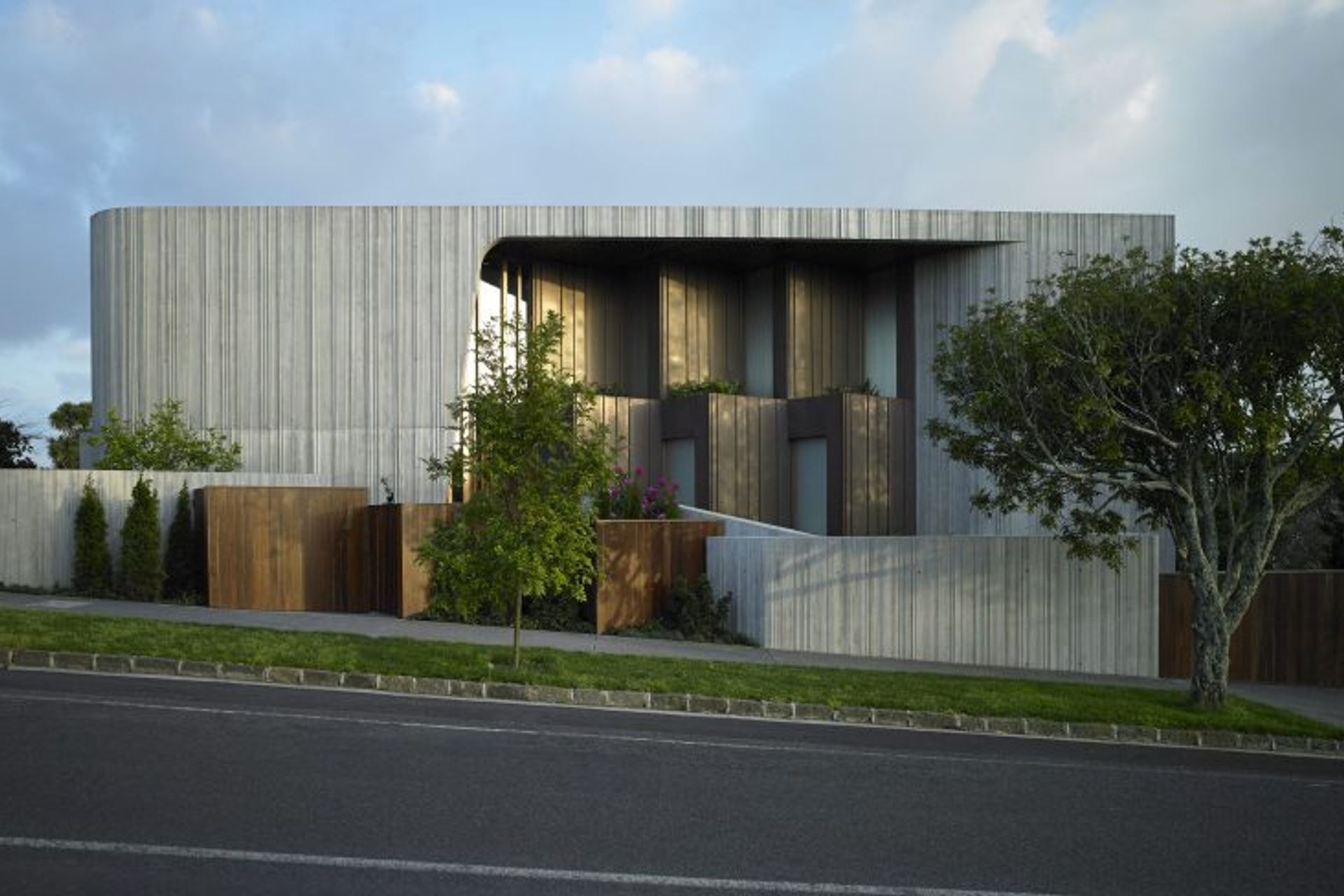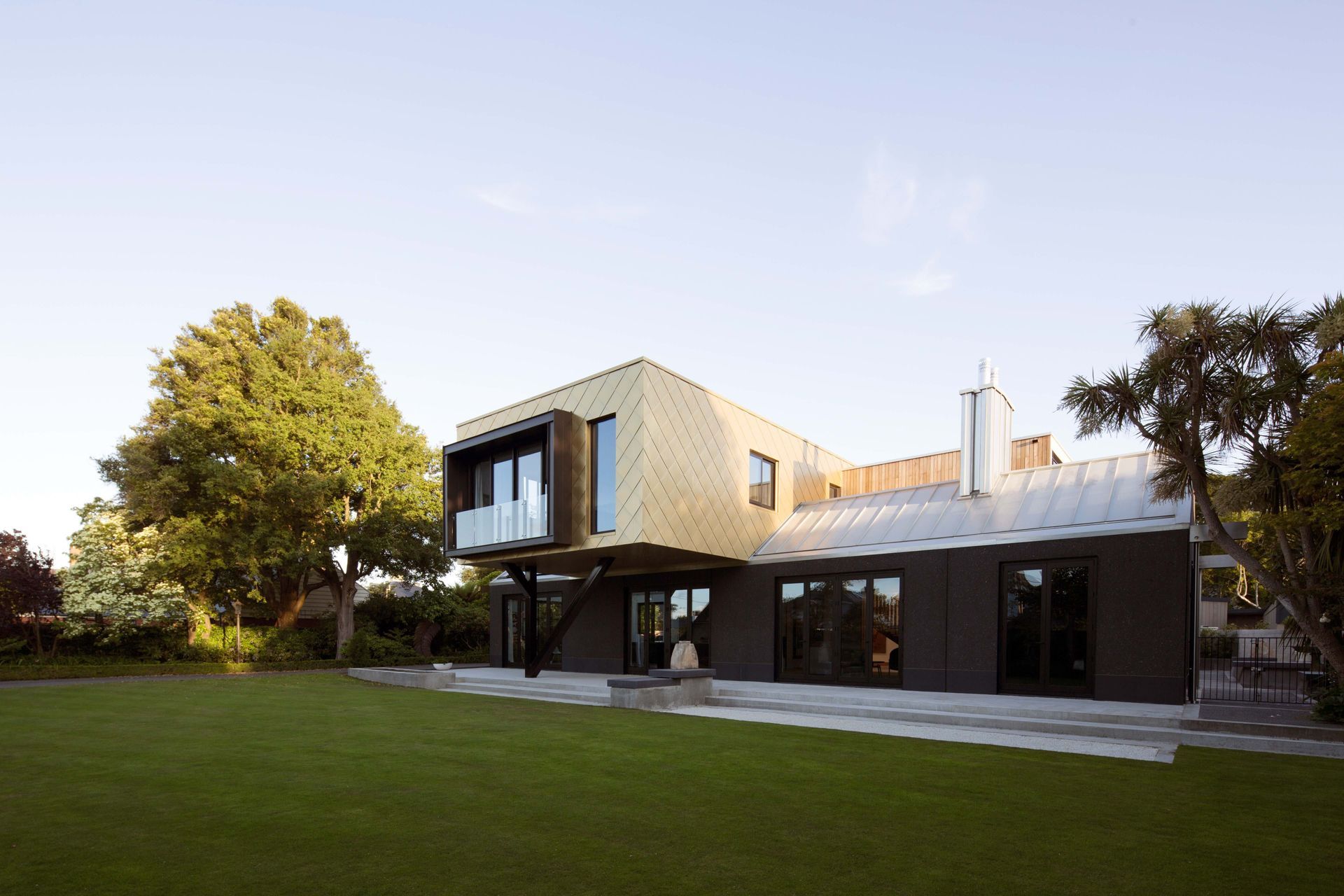Exquisite house cladding ideas for the modern home
Written by
16 April 2023
•
7 min read
If you're planning a new build, cladding is an essential aspect of the project. While some people are happy for their home to blend into the neighbourhood and local surroundings, others are looking to create something bold and unique. Thankfully, there are plenty of exciting house cladding ideas to inspire you in the right direction.
1. Vertically aligned timber cladding
Timber cladding is a classic choice and has been a staple of home building across New Zealand for over 100 years. A great way to modernise its look is to flip the traditional horizontal alignment and go with a vertical cladding installation.
This will accentuate the height of your home’s structure in a very stylish way, bringing warmth in a way that only timber weatherboards can.
Many houses with timber cladding use softwoods like Western Red Cedar, Radiata Pine, Macrocarpa and Douglas Fir. Hardwood options are less common but typical choices include Vitex, Kwila and Garapa.
Related article: The advantages and disadvantages of timber cladding

2. An economical case in vinyl cladding
If you're looking for an economical exterior wall cladding option then vinyl cladding should be near the top of your list.
It is highly durable (lasting decades), weatherproof, and comes in an enormous range of colours, textures, and sizes. Insulated vinyl cladding products boost a home's R-value.
It’s quick to install, easy to clean and maintain, and available in abundance... what’s not to like?
3. A compromise with composite
If you're not keen on an all-plastic product, another great option is composite cladding.
This building material is usually made from a mix of PVC (polyvinyl chloride) mixed with sawdust or wood shavings. Sometimes, the PVC is switched out for other recycled, end-of-life plastics.
It is a more eco-friendly alternative with modern products having a strong emphasis on aesthetics too, looking great up close and afar.

4. Tough and textural fibre cement cladding
Do you love the look of wood cladding but aren't keen on the upkeep it requires? Consider fibre cement cladding. This material is made from sand, cement, cellular fibre, and clay compressed under high pressure to create boards.
It's as durable and weather-resistant as timber but is also lighter, easier to install, requires less maintenance, and is pest-resistant.
Just like wood, it can be painted any colour you want. It also comes in a wide variety of textures — typically mimicking stone, wood, or brick.

5. Dark and rustic bricks
Brick cladding is one of the most popular options in New Zealand, found right throughout the country. Brick has been used as an external wall material worldwide for at least a thousand years, and its popularity continues today.
These days it is available in a wide array of colours and textures depending on the clay and colourants used in the manufacturing process. Again, this allows you to make an alternative choice on convention like, for instance, going for a dark shade like charcoal grey.
This will give your home a modern edge while still retaining the natural rustic qualities that are inherent in brick cladding. On top of this, you’ll still get a cladding material that is safe, strong, thermally efficient, and waterproof.
Related article: The art of brick selection — A definitive guide for Kiwi homes
6. Earthy warmth with terracotta cladding
Famously known as a great material for roof tiles, terracotta cladding is also an option for a home’s exterior walls and is definitely one of the more unique ideas featured on this list.
This unusual house cladding material boasts many of the same beneficial properties as its cousin, brick, just not as widely available. It is lightweight, and vibrant and brings a wonderful earthy warmth to an exterior that few can match. Terracotta tiles can also be glazed in various hues and feature a shiny or matte finish.

7. Aluminium, the architect’s favourite
Aluminium cladding is a popular form of metal cladding used for commercial buildings and architecturally designed residential properties alike.
It has many functional and stylistic virtues that often make it the architect's go-to choice. This construction material comes in a range of finishes, including realistic timber finishes, and is mould and moisture-resistant, long-lasting, weather and fireproof, and boasts unrivalled acoustic properties.
It can be pricey but if you’re looking at a design-heavy concept for a modern house, few alternatives will suit it better than an aluminium cladding system.
Related article: The pros and cons of metal cladding for New Zealand homes

8. Nurture a natural patina
Some other great metal cladding options boast unique qualities of their own like the ability to develop a natural patina.
Zinc and copper cladding are two that do this by changing colour over time as a result of oxidation. This gives a home a bit of character, allowing a home to age and evolve its look. If you don't want to wait, you can find cladding options that come pre-patinated.
These materials are very high-performance, lasting decades with little maintenance, and can be incredibly aesthetic too. What’s more, they can also all be recycled at the end of their life.

9. Solid steel cladding
While we're on a roll with metal, steel cladding is another solid architectural choice to consider for your home. It has strong fire resistance, and weather resistance and requires minimal maintenance making it perfect for the contemporary home.
The aesthetics of steel cladding can vary greatly with many different types of architectural profiles available. From classic corrugated to trapezoidal to standing seam and more — you'll be able to easily find something that meets your specific preferences.
10. Inspirational natural stone wall systems
Like brick and timber, natural stone is an enduringly traditional material. Traditional designs crafted from stone conjure images of ancient castles in England or coastal homes in Italy.
Stone veneer is also popular in New Zealand which many often turn to to capture the aesthetics without the financial and construction challenges. It too can make a huge design statement for a home that is nothing short of inspirational.
You can even choose a mix of natural and simulated stone for the best of both worlds that will keep everyone guessing.
Related article: Stone cladding: pros and cons, types, costs and more

11. Retro feelings with stucco and other plasters
When it comes to types of cladding, you might not consider stucco as your prime pick. After all, didn't it disappear with the 80s and 90s?
In fact, stucco is making somewhat of a comeback due to its durability, cost-effectiveness, energy efficiency, and ease of application. This cement plaster is made from water, sand, and Portland cement. It also comes in a wide range of custom colours, making it surprisingly aesthetically versatile.
Just be aware that it's best suited to dryer climates and professional installation from an experienced cladding installer is very much advised to mitigate against the prospect of future internal moisture.
Related article: What is the most cost-effective cladding in New Zealand?

12. Eye-popping experimental cladding
Exterior cladding boards and cladding panels, like other construction materials, are ever-evolving products.
Architects, engineers, and material scientists are constantly thinking of new innovations to increase the durability and sustainability of cladding. We're talking about everything from ancient rammed earth and natural cork to emerging materials like architectural concrete and 3D-printed modular salt panels.
The biggest issue you might face with alternative cladding materials—aside from sourcing them—is getting planning permission. You'll need to consult an experienced cladding professional and it isn't an option for the faint of heart given the risks but the payoff could be monumental.

Some great external house cladding ideas
With so many options available today, the sky is the limit when it comes to house cladding. What you really need to consider is your budget, your design goals and the practical aspects you want to prioritise. The good news is that no matter how you answer these questions, there’ll be the perfect cladding option out there for the job.
(This article was updated on 21st November 2024)
Discover an extensive range of high-quality cladding solutions on ArchiPro